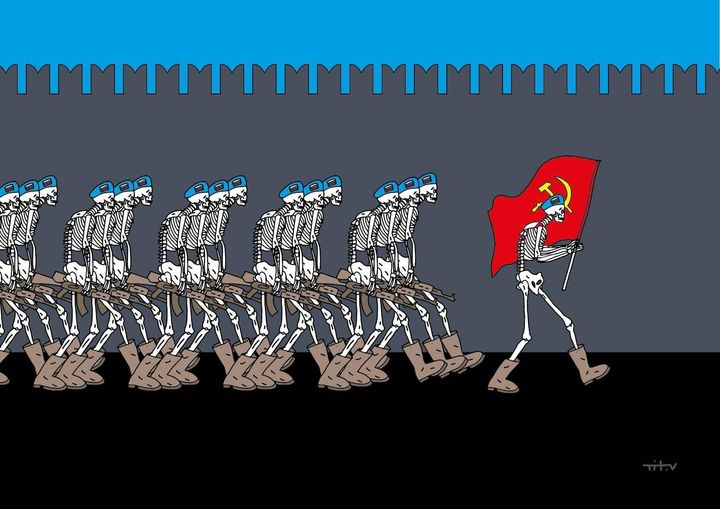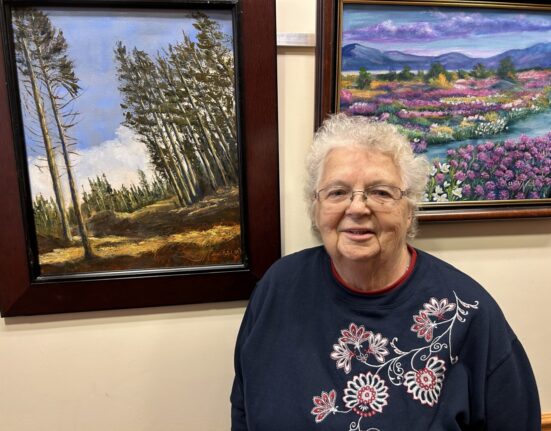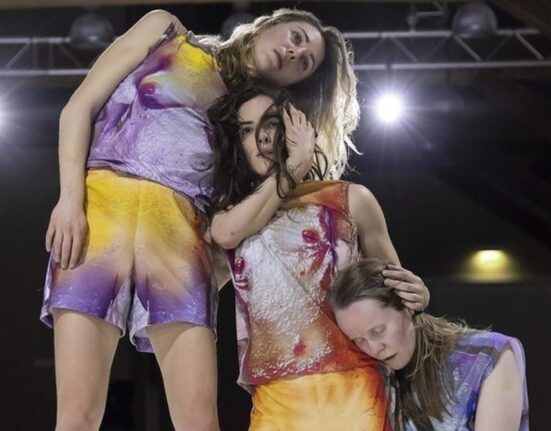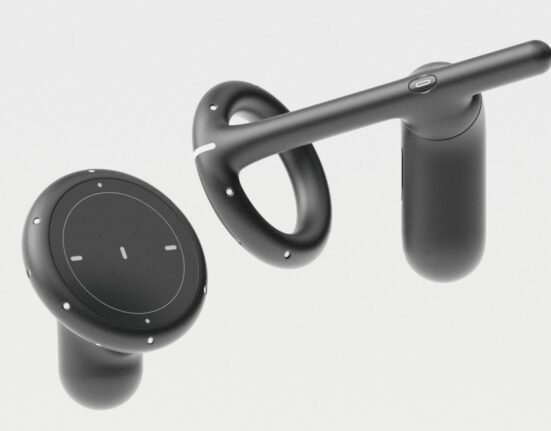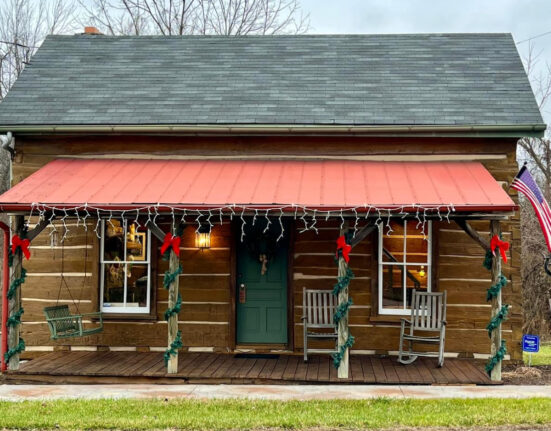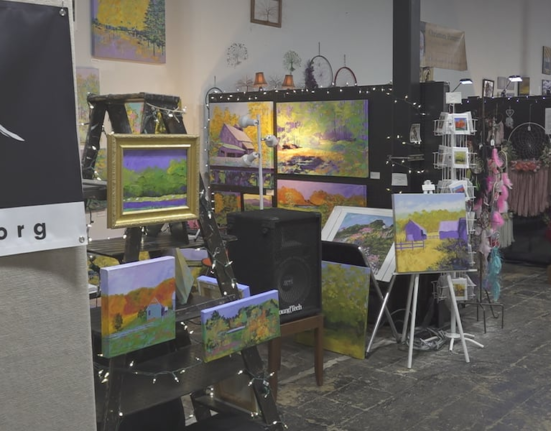A wave of Ukrainian art, and especially graphic art, has cascaded across social media since Russia invaded and occupied Crimea in February 2014. Ten years of war have produced many vivid images created by Ukrainian illustrators , poignantly encapsulating the agony and fury of war and the indomitable Ukrainian resolve. As missile strikes reduce cities and towns to rubble, Ukrainian artists have responded by producing their own creative ammunition – symbols of solidarity, pleas for aid, and proud proclamations of identity.
In particular, Ukrainian graphic art has served as a means to galvanize global support and convey the emotional truth of Russia’s aggression. So while the future remains uncertain, one thing is clear – with paintbrush and mouse in hand, Ukrainian artists will continue transforming the turmoil of war into iconic images that rally the spirit of a defiant nation.
It all began with Crimea in February 2014
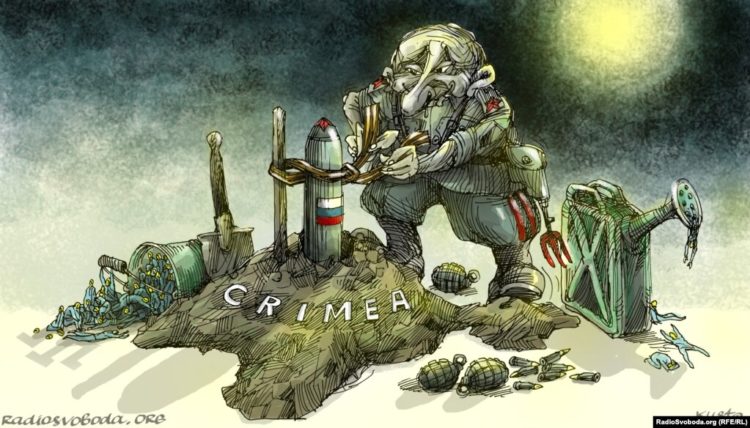
In February 2014, the invasion of Crimea marked the beginning of Russia’s aggression against Ukraine. Groups of armed, unmarked soldiers, termed “little green men,” surrounded airports in Simferopol and Sevastopol. They occupied the Crimean Parliament building, replacing the Ukrainian flag with the Russian tricolour. This set in motion a series of events that would dramatically alter Ukraine’s course.
Russia’s invasion of Crimea paved the way for further incursions into the Donbas region of eastern Ukraine in subsequent months. Fierce clashes erupted between Russian forces and local resistance groups. Months later, in July 2014, Russian-backed militants in eastern Ukraine shot down Malaysia Airlines Flight 17, killing all 298 passengers and crew onboard.

Oleksiy “Kusto” Kustovsky channelled Ukraine’s turmoil during this period into striking political and social satire. A self-taught graphic artist, his vivid illustrations capture the mood of war and defiance as Russia’s aggression against Ukraine escalated.
Evacuation, migration, exile… death
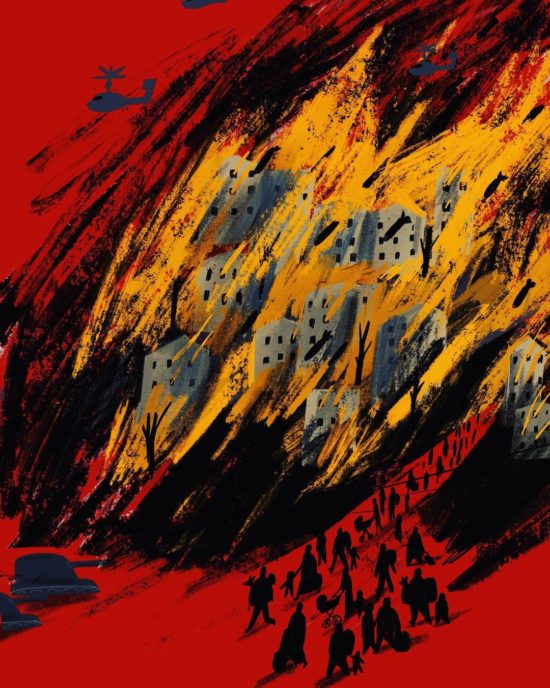
On 24 February 2022, Russia launched its full-scale invasion of Ukraine – a date seared into the memory of every Ukrainian. As missiles and bombs rained down, thousands fled their homes. Streams of refugees poured into western Ukraine as the EU opened its borders. Nearly two-thirds of Ukraine’s children have now been displaced by war.
In the violent weeks that followed, hundreds of civilian bodies were unearthed in mass graves in Bucha, Irpin, Borodianka and Mariupol – the site of the Avostal plant that withstood months of relentless Russian bombardment.
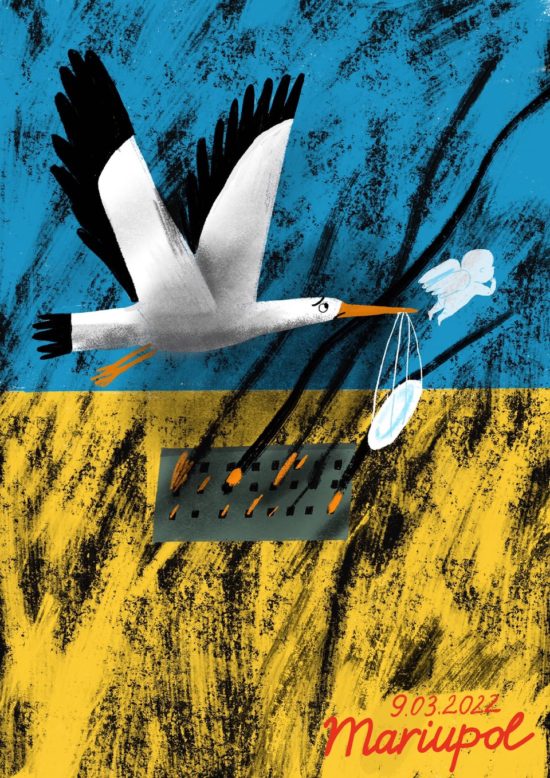
Oksana Drachkovska, once an illustrator of cheerful children’s books, channelled her anguish over the invasion into scenes of death and destruction. As she put it: “I never thought I’d draw such images… but now I can’t draw anything else. Everything that’s inside of me comes out this way…”
Air raid alerts, black skies, and dugouts
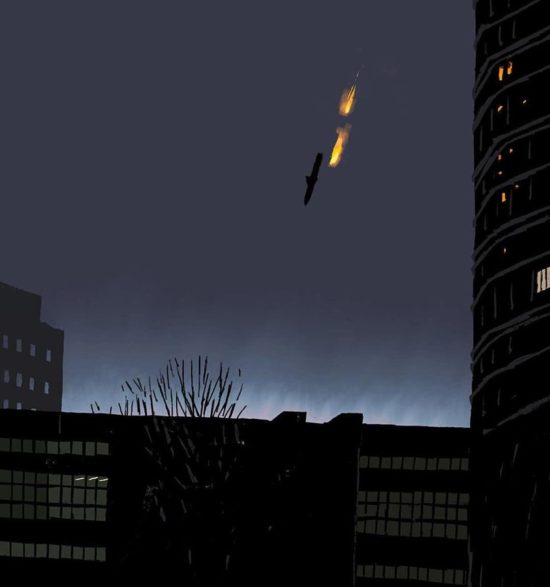
Missiles continue flying across Ukraine, indiscriminately striking cities, towns and villages – killing civilians of all ages. Day and night, air raid sirens pierce the skies. Parents hustle children to makeshift shelters in corridors or bathrooms. The children, in turn, gaze up curiously at the ominous dark sky.
Meanwhile, somewhere not far away, their fathers, uncles, brothers and friends hunker anxiously in dugouts – smoking, waiting for the command to engage the enemy.
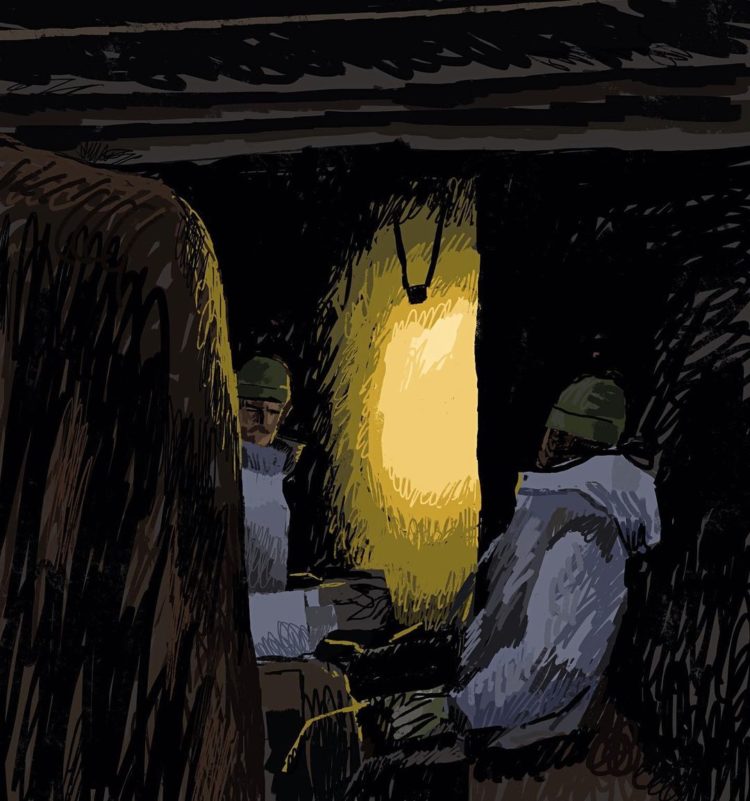
Serhiy Maidukov, known for his magazine illustrations in publications like The Washington Post, captures these scenes of Ukraine under siege. By documenting the war’s impact, he hopes to reach and affect people worldwide.
Courage and resistance, strength and perseverance
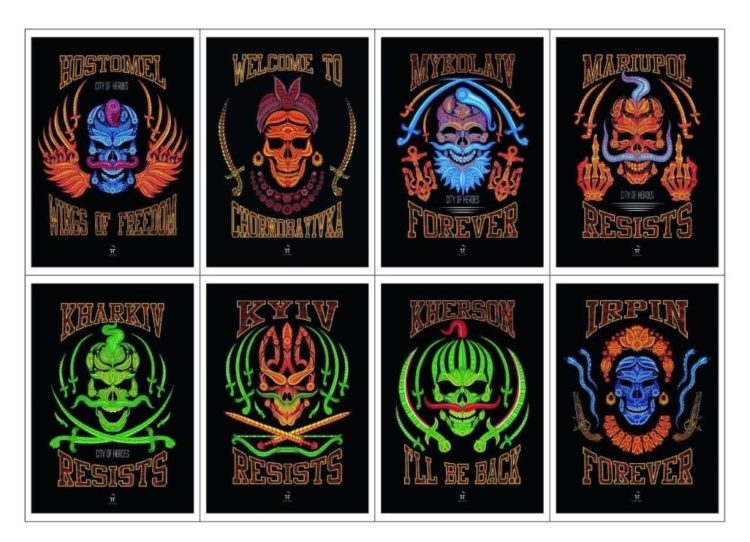
Hostomel, Chornobayivka, Mykolaiv, Mariupol and countless other cities earned the title “Fortress Cities” for withstanding Russia’s onslaught. This was only possible thanks to the courage and steadfastness of the Ukrainian people. Equally vital has been the resilience and resolve captured by artist Andriy Yermolenko in his poster artwork.
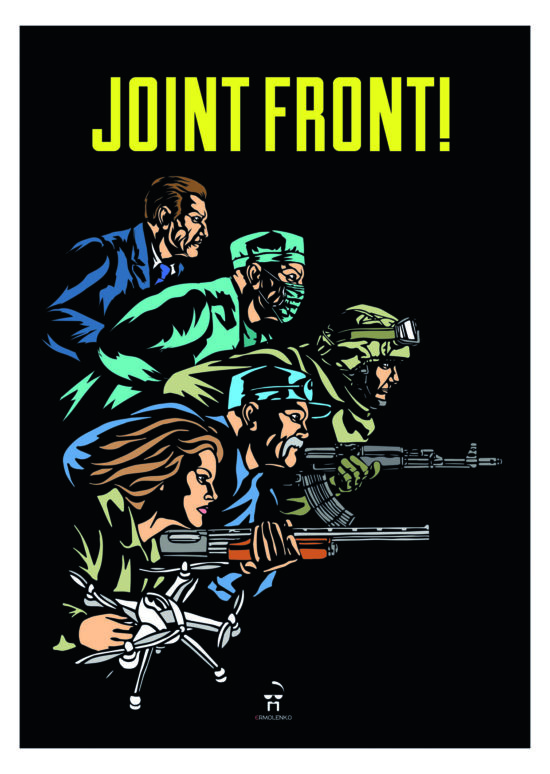
Yermolenko, known for vivid illustrations of key figures like Taras Shevchenko, is an artist, designer, and prolific illustrator. He created the iconic chevrons of the Donbas and Azov battalions.
As he puts it: “If we just stay silent, merely counting days on Facebook while our soldiers fight and die… If we just continue shouting about re-claiming Crimea and the occupied territories… that’s not enough. Every one of us must act decisively – creating posters is my way.”
Kyiv under siege

As pillars of Ukrainian resistance, the capital Kyiv and former capital Kharkiv have borne the brunt of Russia’s lethal airstrikes. Moscow has targeted vital infrastructure, apparently to deny residents heating, electricity and water – attempting to break their spirit and instil fear. Barrages of missiles have also struck hospitals, killing and maiming adults and children.

Artist Anta Frirean, now based in Germany, channels Ukraine’s struggle into vivid, emotional illustrations.
As she says, “I’m not a soldier or doctor on the front lines. I don’t carry a gun, but I have my voice and my heart. My pencil is my sword – one of thousands defending the world against this demented evil that has brought fire and blood. Each and every one of us fights today, each person on his own front!”
Russia and Putin – evil and cruelty
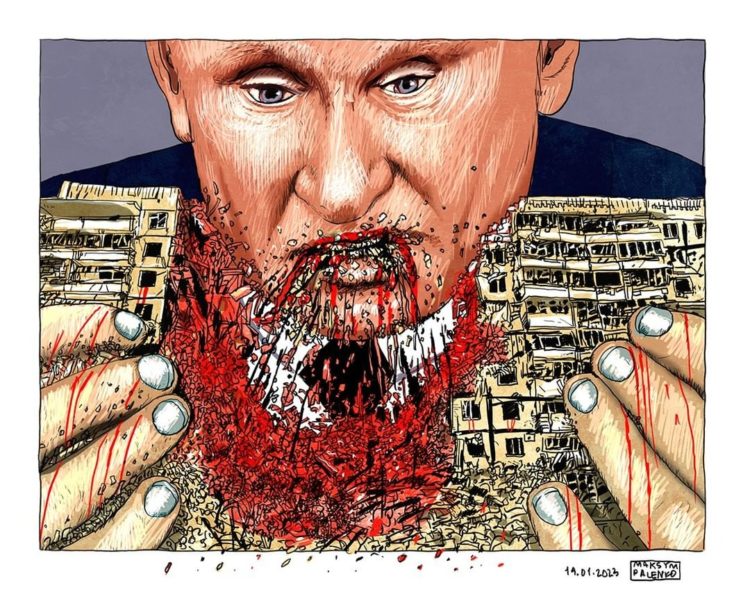
A hallmark of this war has been the Russian army’s brutality – not just toward Ukrainians but even those Russia claims as its own. Such cruelty stems from the Russian national character, historically ingrained…with Putin as the embodiment of this evil.
Maksym Palenko channels his talents into creating incisive protest art lambasting Putin and Russia’s actions in Ukraine.
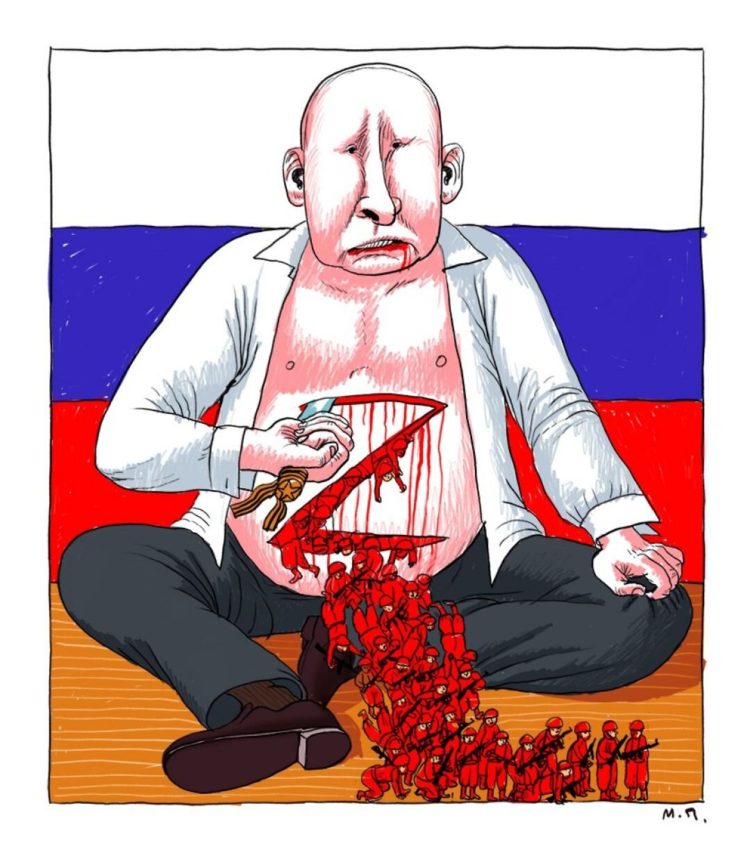
In one piece titled “Seppukutan,” Vladimir Putin commits ritual suicide by slicing open his belly with the letter Z – actively propagated by Russian propaganda to symbolize their so-called “special military operation.”
Arm Ukraine Now!

Initially underequipped, Ukraine now has Western weaponry. Yet after two years of intense, industrial-scale combat depleting European stockpiles, only Kyiv possesses a real anti-air shield, while critical American arms delivery remains pending.
And still, Ukraine serves as Europe’s protective shield – fighting for the same democratic values so loudly trumpeted in Western capitals.
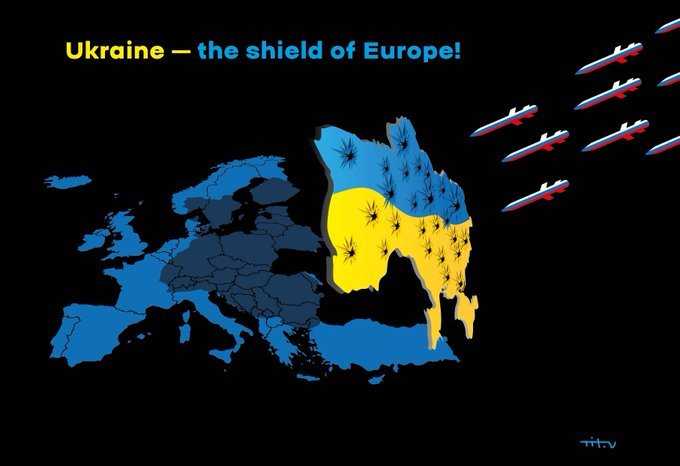
Artist Nikita Titov, born in Estonia but based in Ivano-Frankivsk, captures Ukraine’s plight in graphic posters. As he puts it: “I’d like to stop making such posters, but unfortunately cannot yet…Ukrainians are suffering from war.”
Stealing children and culture
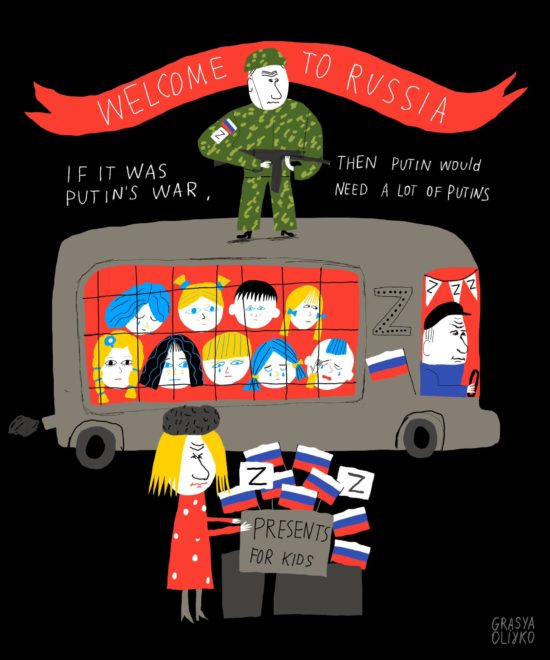
For ages, Russia has stolen and co-opted Ukrainian culture, murdering poets, writers and artists who dare challenge its self-image of cultural supremacy. “No one can be great, only Russians” – so goes its refrain.
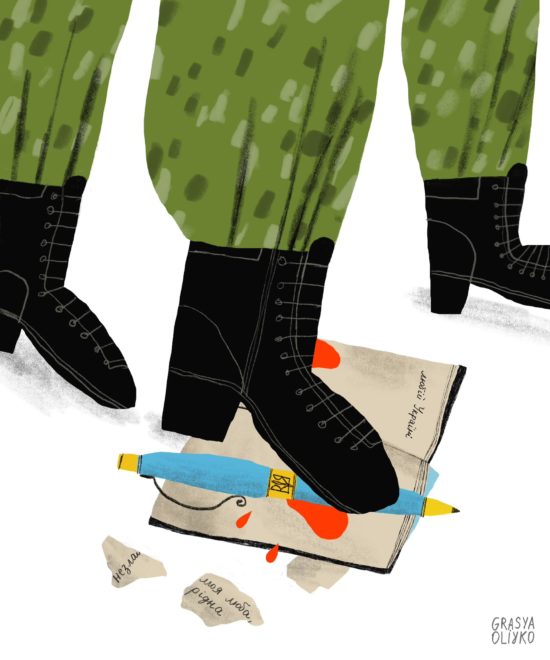
Grasya Oliyko, an artist and writer from Kyiv, shares poignant poems and illustrations about the war. As she writes: “What kind of society raises so many murderers, invaders, sadists and rapists? Were they all moulded by Putin alone? What ‘great’ books did their mothers read to them? No – these invaders reflect a cultural sickness running deep, with wives, mothers and children cheering their ‘heroic’ slaughter. Something’s terribly wrong with this culture.”
Blue and yellow colours everywhere

Blue and yellow rightly belong to Ukraine – the colours of its skies and fields symbolizing freedom, courage and dreams of peace. The blue-and-yellow flag flies proudly in cities, towns and villages.
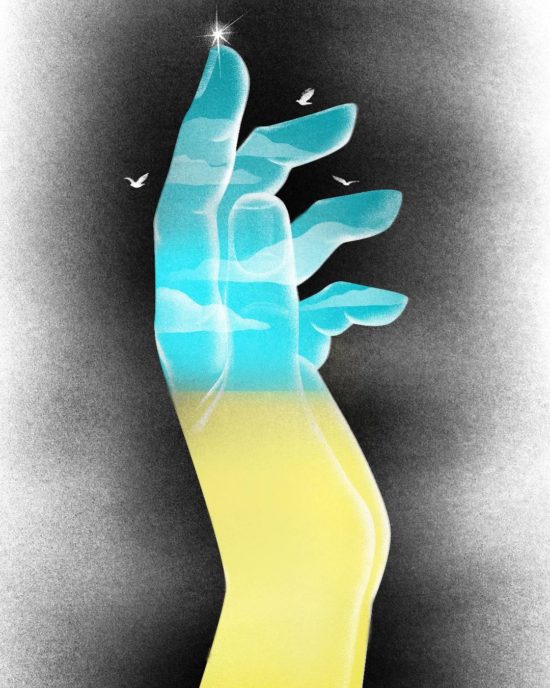
Artist Masha Foya, like many colleagues, devotes her illustrations to the war, often accentuating her images with those resonant hues.
Victory and hope
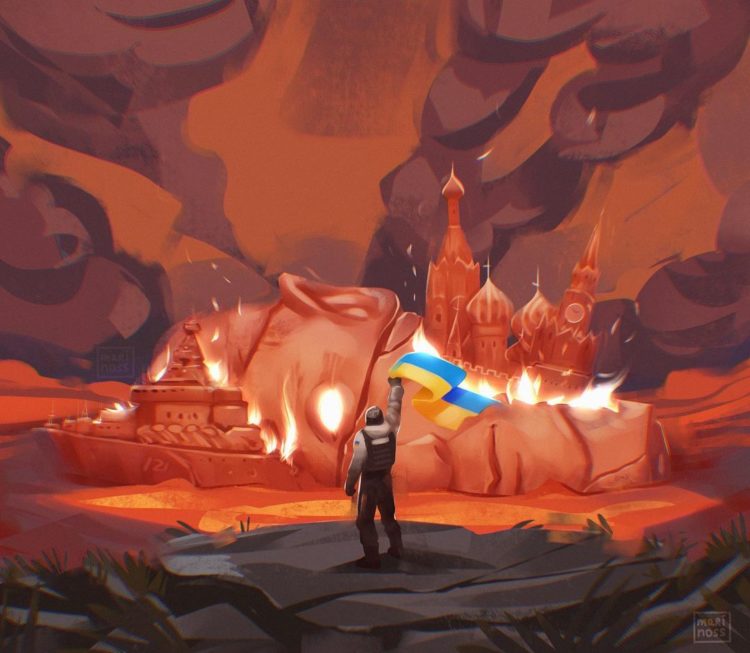
After two brutal years of war, Ukrainians still cling to hope and continue fighting for freedom, rejecting any talk of concessions or surrender while Russia occupies their land. Life is terribly difficult, but only one outcome is possible – victory.
Artist Maryna Solomennikova, renowned for the iconic “Madonna of Kyiv”, paints the Ukrainian soldiers who personify that victory and promise of a greater future.

Related:

